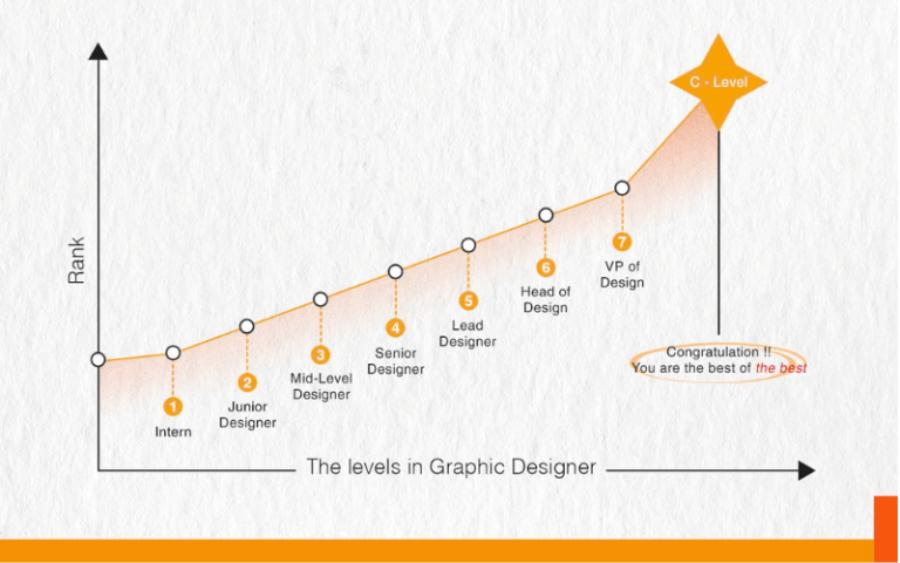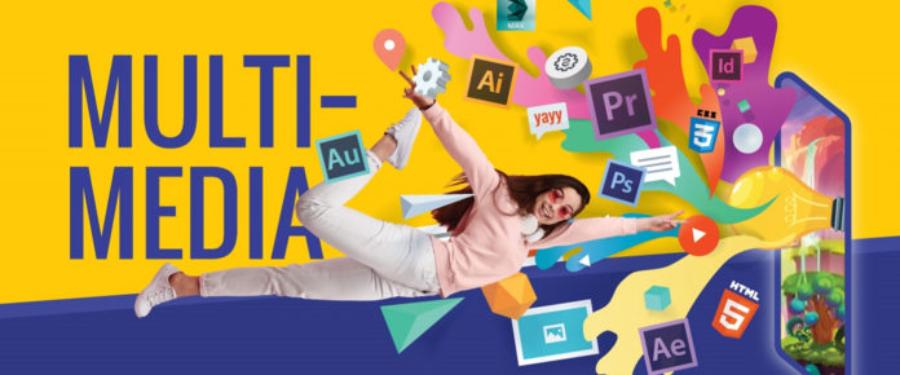Best Selling Products
Learn About Multimedia Design, How to Distinguish Multimedia Design and Multimedia Technology
Nội dung
- 1. What is Multimedia Design?
- 1.1. Basic Definition of Multimedia Design
- 1.2. Application fields of Multimedia Design
- 2. Elements that make up the Multimedia Design industry
- 2.1. Images and graphics
- 2.2. Sound and sound effects
- 2.3. Video and animation
- 2.3.1. The Importance of Video in Multimedia Design
- 2.3.2. Animation – The Liveliness of Ideas
- 2.3.3. Combining video and animation in modern media
- 2.4. User interaction and experience
- 2.4.1. User Experience – The Heart of Multimedia Design
- 2.4.2. User Interface (UI) and Interactivity
- 2.4.3. Technology and innovation in interaction
- 3. Distinguishing Multimedia Design and Multimedia Technology
- 3.1. Multimedia Design focuses on content creation
- 3.2. Multimedia Technology focuses on engineering and software
- 3.3. The Relationship Between Multimedia Design and Multimedia Technology
- 4. Skills required for a person working in Multimedia Design
- 4.1. Graphic design skills
- 4.2. Audio and video processing skills
- 4.3. Creative and artistic thinking
- 4.4. Basic programming and interaction skills
- 5. Career opportunities when studying Multimedia Design
- 5.1. Popular locations
- 5.2. Industry development prospects
- 5.3. Income and working environment
- 6. Things to consider when choosing Multimedia Design
- 6.1. Requires patience and continuous learning
- 6.2. Soft skills development
- 6.3. Choosing a quality training environment
- 7. Conclusion
Explore Multimedia Design - a creative, dynamic field with wide career opportunities. Clearly distinguish between Multimedia Design and Multimedia Technology to give you a comprehensive view.

Multimedia Design is currently attracting great interest from young people who are passionate about creativity and technology. This is a field that converges many types of digital art, flexibly combining images, sounds, videos and interactions to convey messages most effectively. However, many people still confuse Multimedia Design and Multimedia Technology. In this article, Sadesign will help you understand the Multimedia Design industry, as well as distinguish between these two seemingly similar but fundamentally different concepts.
1. What is Multimedia Design?
1.1. Basic Definition of Multimedia Design
Multimedia Design is a field that focuses on creating various media products that combine elements such as images, audio, video, animation, and interactivity. These products can be websites, promotional videos, video games, mobile applications, e-learning materials, and many other forms of digital content. The goal of Multimedia Design is to create a user experience that is dynamic, engaging, and effective in conveying information.
.jpg)
1.2. Application fields of Multimedia Design
Multimedia Design is present in almost all areas of life and business such as advertising, media, education, entertainment, e-commerce, digital product design and many other creative industries. With the development of digital technology and the internet, the demand for multimedia products is increasing, opening up many attractive career opportunities for those who choose to study and work in the field of Multimedia Design.
2. Elements that make up the Multimedia Design industry
2.1. Images and graphics
Images and graphics are the foundation of any multimedia design. They not only convey a message visually but also create a powerful impression on the viewer. From icons and illustrations to complex designs, images and graphics play a vital role in building brand recognition and attracting attention.
Constituent elements
Color: Color is not only aesthetically pleasing but also evokes emotions and conveys messages. Choosing the right color enhances communication effectiveness.
Layout: A reasonable layout helps viewers easily access information, creating harmony and balance for the design.
Typography: Typefaces and letter arrangements greatly influence readability and viewer perception.
Illustrations: Illustrations help clarify content, increase vividness and ease of understanding for the product.
Tools and software
To create quality graphic products, designers use many specialized tools and software such as Adobe Photoshop, Illustrator, CorelDRAW, Sketch, Figma, and many others. Mastering these tools helps improve work efficiency and product quality.
2.2. Sound and sound effects
Sound and sound effects are an essential element in multimedia design. They enhance the user experience, creating a vivid and immersive space. Sound can be background music, sound effects, or voice, depending on the purpose and content of the product.
Popular types of sounds
Background music: Helps create atmosphere, evoke emotions and increase product appeal.
Sound effects: Are small sounds added to highlight actions or events in a product.
Voice: Used in tutorials, advertisements or games to convey information clearly and vividly.
Tools and software
To process and create quality sound, designers use software such as Adobe Audition, Audacity, Logic Pro, FL Studio, and many others. Mastering these tools helps create vivid and professional sound for the product.
2.3. Video and animation
2.3.1. The Importance of Video in Multimedia Design
In the Multimedia Design industry , video is the most powerful media. With the ability to convey information visually and vividly, video attracts viewers naturally, creating a deep and memorable impression. Marketing campaigns, product introductions, and brand promotions today all make the most of video as a key tool.
The rise of digital platforms like YouTube, TikTok, and Instagram has made video central to content production. In Multimedia Design , a well-made video is not just a series of moving images, but a synthesis of sound, color, rhythm, and emotion. Understanding the relationship between these elements helps designers create a deep experience for viewers.
2.3.2. Animation – The Liveliness of Ideas
Animation is a tool for animating static images, bringing life and depth to digital content. In Multimedia Design , animation is not only used for entertainment but also plays an important role in teaching, advertising, technical simulation, medicine and many other fields.
Animation’s uniqueness lies in its ability to express complex ideas through simple, easy-to-understand images. This is especially useful in projects where visual language needs to replace words. Tools like After Effects, Blender, or Cinema 4D have become mainstream software that helps designers realize dynamic content in the field of Multimedia Design .
2.3.3. Combining video and animation in modern media
In practice, the combination of video and animation helps to increase the value of content. Dynamic intros, illustrative symbols or animated charts can be cleverly integrated into videos to clarify messages and keep viewers engaged longer. This is a strategy applied by many professional content production units to optimize communication effectiveness. The flexibility and creativity that video and animation bring are the driving force for the strong development of Multimedia Design in the digital age.
2.4. User interaction and experience
.jpg)
2.4.1. User Experience – The Heart of Multimedia Design
When it comes to Multimedia Design , the user experience (UX) factor cannot be ignored. A product with an eye-catching interface but is not convenient to use will be quickly ignored by users. User experience is the key to retaining the audience and helping the brand build trust. In modern design, UX is not just a small branch but the foundation that guides the entire creative process.
The combination of visual design, layout, color, sound and motion must be carefully considered to guide users on a coherent journey. The application of behavioral psychology in UX is increasingly being focused on by experts in the Multimedia Design industry to improve design effectiveness.
2.4.2. User Interface (UI) and Interactivity
Next to UX, the user interface (UI) is the visual layer that users directly interact with. The UI must be consistent with the product’s features and goals to create unity. Every icon, button, and transition effect needs to be carefully designed to enhance engagement.
In the field of Multimedia Design , interactivity is what makes the difference. No longer just static content, today’s products integrate multiple layers of content that respond to user actions. From interactive games, dynamic websites to advanced presentations, all require a diverse and creative design platform.
2.4.3. Technology and innovation in interaction
Virtual reality (VR), augmented reality (AR) and artificial intelligence (AI) technologies are opening up new directions for the Multimedia Design industry . Users not only view but also interact, feel and participate in content in an active way.
Technology solutions such as 3D websites, interactive games, AR applications in e-commerce, etc. are proving that the future of Multimedia Design lies in the ability to create unique, personalized experiences. This is also the reason why designers must constantly update technology and expand their design thinking capabilities to keep up with the times.
3. Distinguishing Multimedia Design and Multimedia Technology
.jpg)
3.1. Multimedia Design focuses on content creation
Multimedia Design is all about creating artistic and creative media products. Multimedia designers combine art, graphic design, video editing, and audio editing skills to create engaging and effective products. The field requires aesthetic sensitivity and the ability to convey messages through images, sound, and movement.
3.2. Multimedia Technology focuses on engineering and software
In contrast, Multimedia Technology is the field of research and development of technologies and software for creating, processing, and transmitting multimedia content. Multimedia technology experts work with programming, system design, signal processing, and hardware technologies to ensure that multimedia products operate stably and effectively. This is a more technical field, requiring in-depth knowledge of technology and software.
3.3. The Relationship Between Multimedia Design and Multimedia Technology
Although different in focus, Multimedia Design and Multimedia Technology have a close, mutually supportive relationship. Multimedia design products would not be possible without modern processing, transmission and display technologies. Conversely, multimedia technologies also require creative designers to maximize the features and potential of the technology.
4. Skills required for a person working in Multimedia Design
4.1. Graphic design skills
To be successful in the Multimedia Design industry, mastering graphic design tools is a must. Knowing how to use Photoshop, Illustrator, After Effects, Premiere Pro will help designers create diverse and quality products.
4.2. Audio and video processing skills
The ability to edit and process audio and video is also an indispensable skill. This helps increase the value of multimedia products, making the content more vivid and attractive.
4.3. Creative and artistic thinking
Multimedia Design requires constant creativity and aesthetic sensitivity. Professionals need to be able to combine visual, audio and motion elements harmoniously, creating attractive products and effective message transmission.
4.4. Basic programming and interaction skills
Understanding basic programming such as HTML, CSS, JavaScript helps multimedia designers work better on projects with highly interactive elements such as websites, applications. UX/UI skills are also very important in creating the best user experience.
5. Career opportunities when studying Multimedia Design
5.1. Popular locations
Graduates of Multimedia Design can work in many positions such as: graphic design, video editing, film editing, website design, game design, multimedia advertising specialist, or work in media companies, studios, advertising agencies.
5.2. Industry development prospects
With the current strong digitalization trend, the Multimedia Design industry is expanding rapidly and constantly requires high-quality human resources. Companies need people who are creative and have mastered technology to develop new, unique communication products that are suitable for the market and trends.
5.3. Income and working environment
The Multimedia Design industry offers quite attractive income levels, especially for those with solid professional skills and unique creativity. The working environment in the industry is often dynamic, creative, with many opportunities for learning and advancement.
6. Things to consider when choosing Multimedia Design
.jpg)
6.1. Requires patience and continuous learning
Multimedia Design requires students to constantly update their knowledge and new technologies. Due to the creative nature and rapidly changing technology, patience and a desire to learn are key factors for success.
6.2. Soft skills development
In addition to technical skills, teamwork, communication and time management skills are also important. Multimedia projects are often the result of collaboration between many different departments and specialists.
Effective Communication
Good communication skills help you convey ideas clearly and convincingly, which is especially important when working with clients or in a team environment.
Teamwork
During the design process, you often have to collaborate with different departments. Teamwork skills help you integrate and coordinate effectively, thereby creating a complete and high-quality product.
Time Management
Multimedia Design professionals often face projects with tight deadlines. Time management skills help you complete your work on time while maintaining quality.
Problem Solving
During the design process, it is inevitable that problems will arise. Problem-solving skills help you find solutions quickly and effectively, ensuring progress and quality of work.
6.3. Choosing a quality training environment
Choosing a school or course that offers practical training and updates on design trends and multimedia technology is an important decision. This helps learners quickly access industry realities and improve their job opportunities.
7. Conclusion
Multimedia Design is a diverse creative field that combines art and technology to create modern and effective media products. The fundamental difference between Multimedia Design and Multimedia Technology lies in the focus on content creation versus technical and software development. You need to understand this distinction to have a more accurate orientation in your learning and career development process. If you are passionate about creativity and want to participate in the dynamic digital media industry, Multimedia Design is a very worthy choice with many open opportunities.












































